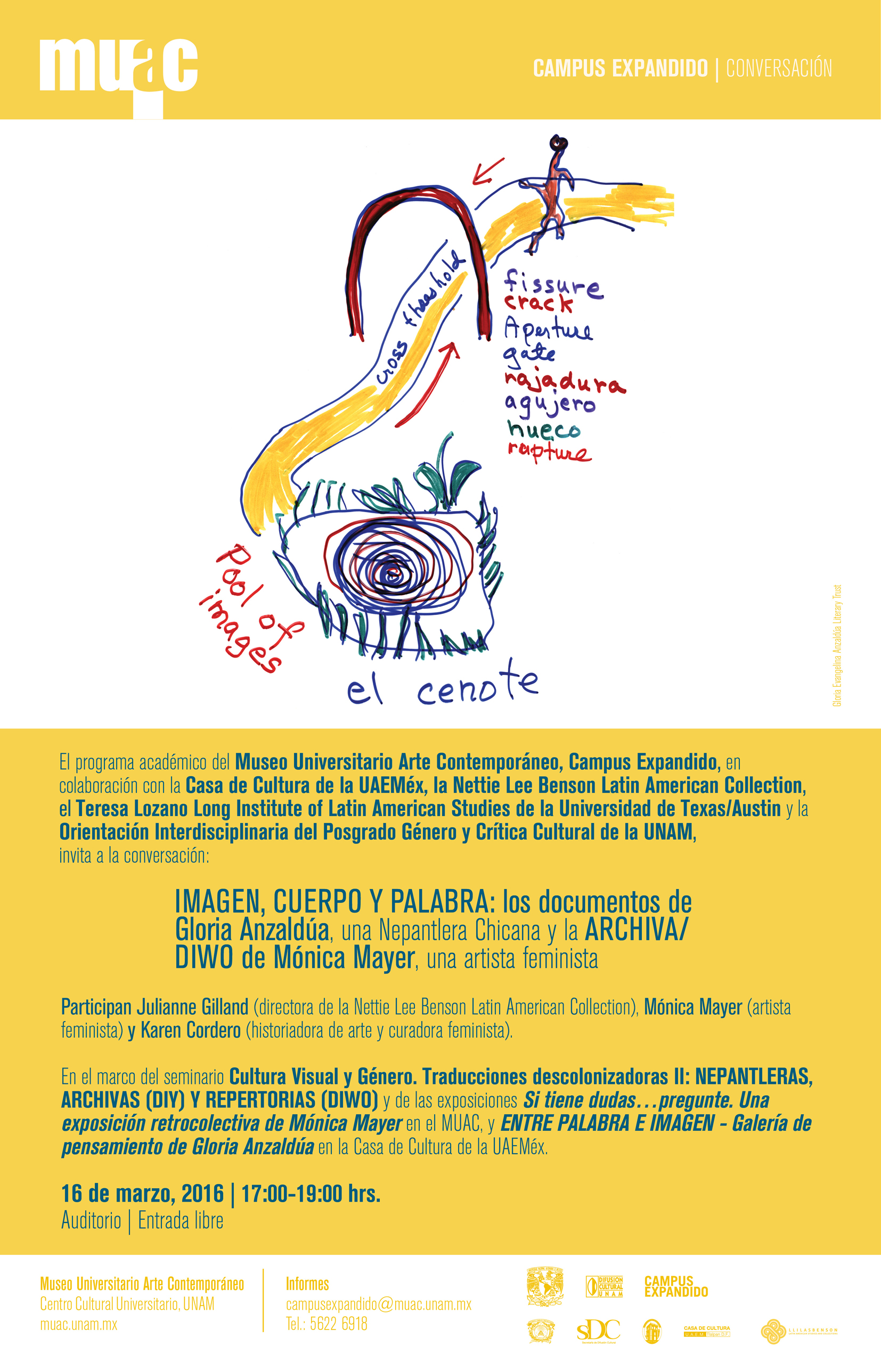Blog
Interview: Hauntings in the Archive, Frieze
Hauntings in the Archive
Nina Höchtl and Julia Wieger discuss researching the Austrian Association of Women Artists and their efforts to disrupt unreliable histories
An understanding of history as unreliable – a subjective, edited text, fallible to human error or deliberate bias – has been much explored in recent politics and art practice. The archive has become both a physical and rhetorical space in which to challenge omissions, gaps and absences and ask questions about hierarchies of power. Who, and how, do we remember, and why? The intricate relationship between feminism and the archive – the notion of activating and preserving marginalized history as a form of collective resistance – has been addressed by academics such as Kate Eichhorn, a lecturer in writing and cultural theory at The New School in New York, who perceive an engagement with the past as a means to stage radical, progressive interventions in the present. Akin to other energized forms of political intervention, the archive is there to be reclaimed.
For more, see https://frieze.com/article/hauntings-archive
Interview NINA HOECHTL & JULIA WIEGER TALK HAUNTINGS IN THE ARCHIVE!, FILMDOO
Interview NINA HOECHTL & JULIA WIEGER TALK HAUNTINGS IN THE ARCHIVE!:
https://www.filmdoo.com/blog/2017/08/14/interview-nina-hoechtl-julia-wieger-talk-hauntings-in-the-archive/
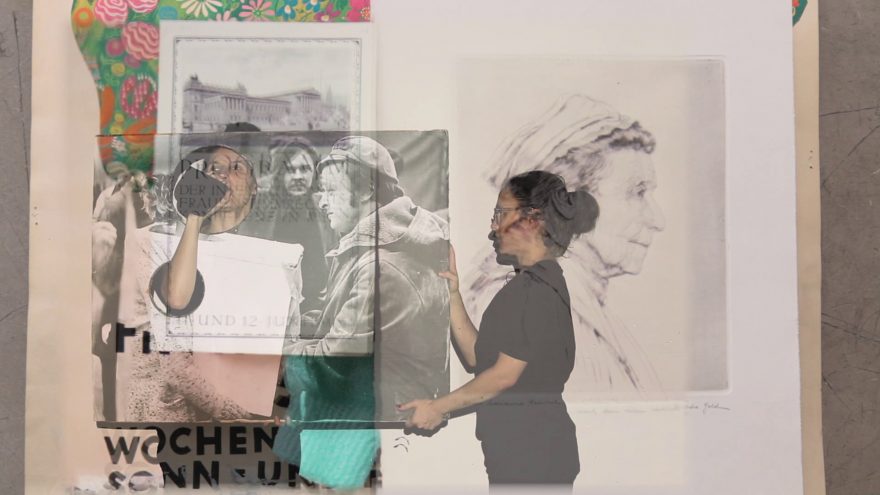
HAUNTINGS IN THE ARCHIVE!, 2017, still: Liesa Kovacs, Nick Prokesch
HAUNTINGS IN THE ARCHIVE!, LFFF2017, 19 August 1:30pm
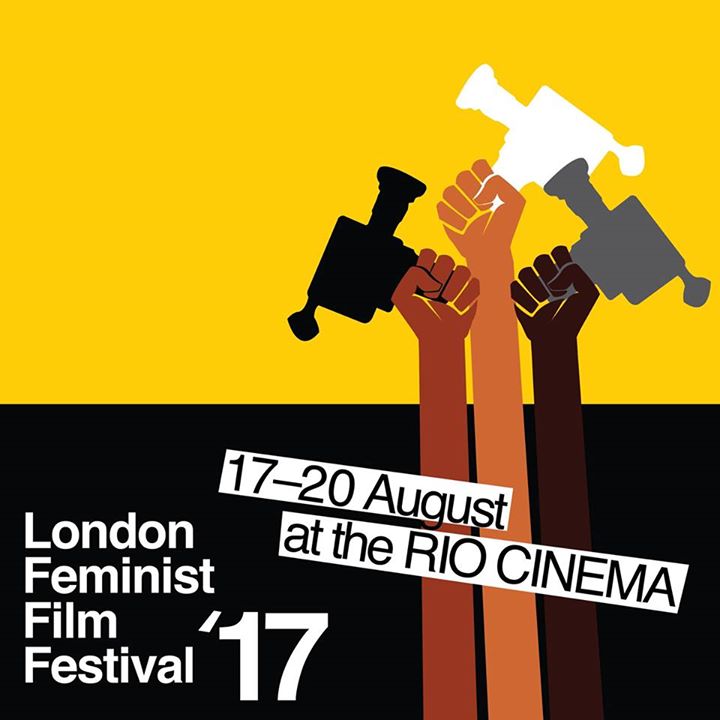
SATURDAY 19 AUGUST 1:30 pm
FEMINISM AND THE ARCHIVE + panel discussion with Althea Greenan (Curator at the Women’s Art Library at Goldsmiths University), Samia Malik (from the Women of Color Index reading group that explores the Women’s Art Library catalogue at Goldsmiths to visibilize WoC artists’ work) and Julia Wieger (co-director of Hauntings in the Archive! and co-founder of the Secretariat for Ghosts, Archival Politics and Gaps (SKGAL), at the VBKÖ).
LFFF2017 will screen the European premiere of feature documentary Hauntings in the Archive! This will be followed by a short talk by Selina Robertson on her research with the Rio Cinema’s 1980s–1990s feminist film curation archive.
Spuken im Archiv! (Hauntings in the Archive!)
Trailer HAUNTINGS IN THE ARCHIVE! from SKGAL on Vimeo.
Hauntings in the Archive! reflects on and exposes the his/herstory/ies of the Austrian Association of Women Artists (VBKÖ) through its century-old archive of letters, photos, catalogues and thousands of other documents. The Secretariat for Ghosts, Archive Politics and Gaps curates the material to conjure up the spectres of the multiple lives of the VBKÖ that meet and share the scene in the film: ghosts of national socialism encounter colonial fantasies and old and new feminist agencies.
¡HECHIZOS EN EL ARCHIVO!/HAUNTINGS IN THE ARCHIVE!, MICGénero, August-October 2017
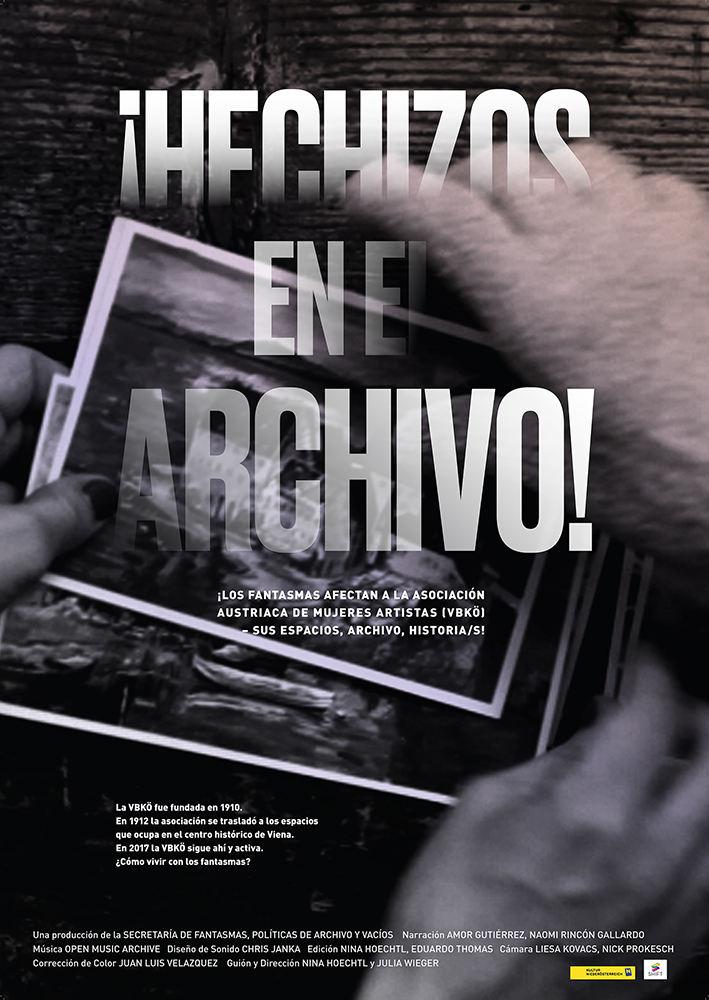
SCREENINGS
Mexico City
Saturday, August 5, 8pm, Goethe-Institut Mexiko
Tuesday, August 8, 6pm, Cinepolis Diana
Friday, August 11, 4:30pm, Museo Memoria y Tolerancia
Puebla
Saturday, August 26, 7pm, Complejo Cultural Universitario, BUAP
Buenos Aires
Tuesday, September 26, 6pm, CINE.AR Sala Gaumont
Trailer HAUNTINGS IN THE ARCHIVE! from SKGAL on Vimeo.
¡HECHIZOS EN EL ARCHIVO!/HAUNTINGS IN THE ARCHIVE! attempts a long, fragmentary cut through the his/hertory/ies of the Austrian Association of Women Artists (VBKÖ). Founded in 1910, the VBKÖ was one of the first organizations in Europe to represent the artistic and economic interests of women artists. In 2017 the association is still active and it faces ghosts of national socialist ideologies and of colonial fantasies as well as spectres of old and new feminist agencies.
OFFICIAL SELECTION MICGénero, Mexico and Argentina micgenero.com/, London Feminist Film Festival londonfeministfilmfestival.com/
A film and production by the SECRETARIAT FOR GHOSTS, ARCHIVAL POLITICS AND GAPS
Narrators AMOR GUTIÉRREZ, NAOMI RINCÓN GALLARDO
Music OPEN MUSIC ARCHIVE
Sound design CHRIS JANKA
Edited by NINA HOECHTL, EDUARDO THOMAS
Camera LIESA KOVACS, NICK PROKESCH
Color correction JUAN LUIS VELAZQUEZ
Written and directed by NINA HOECHTL AND JULIA WIEGER
Lecture “Againstogether in lucha libre (in Mexico)” @ Kunstuni Linz
Lecture “Againstogether in lucha libre (in Mexico)” (in German)
in the frame of the year’s subject „appropriation – body & soul“
Wednesday, April 5, 2017, 2pm
Kunstuniversität Linz
Domgasse 1
Zeitbasiertes Wohnzimmer DO0458
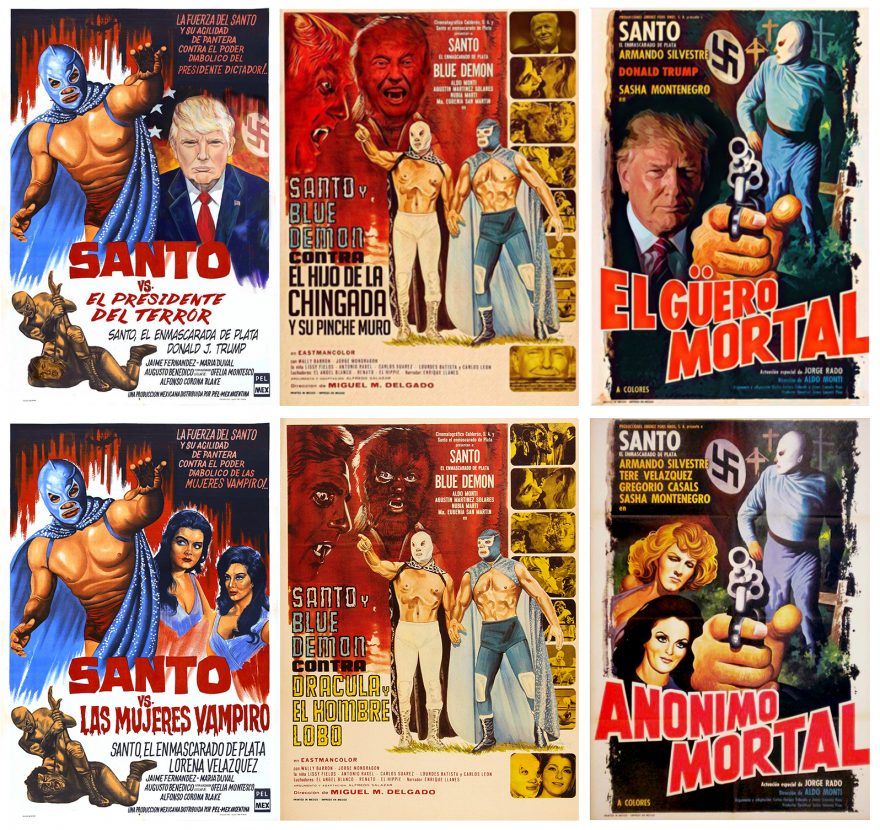
Presentation and exhibition @ BEYOND BORDERS
Presentation and exhibition A(R)MANDO VO(I)CES A Gloria Anzaldúa Thought Gallery with Verena Melgarejo Weinandt in the frame of the international conference BEYOND BORDERS: Literaturas y culturas transfronterizas mexicanas y chicanas
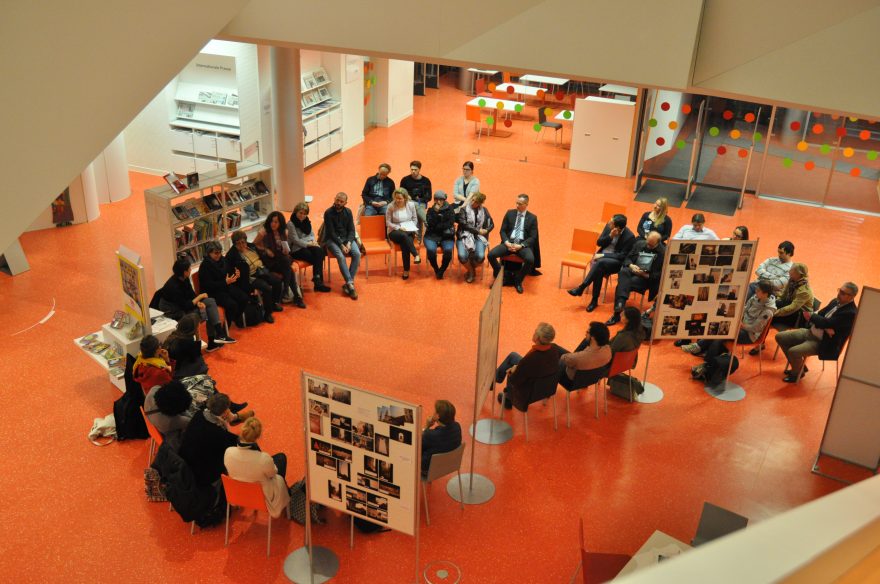
Video presentation “MY GÜERX SKIN HURTS HORRIBLY. -Sí, cómo no.”, SGFA 2015
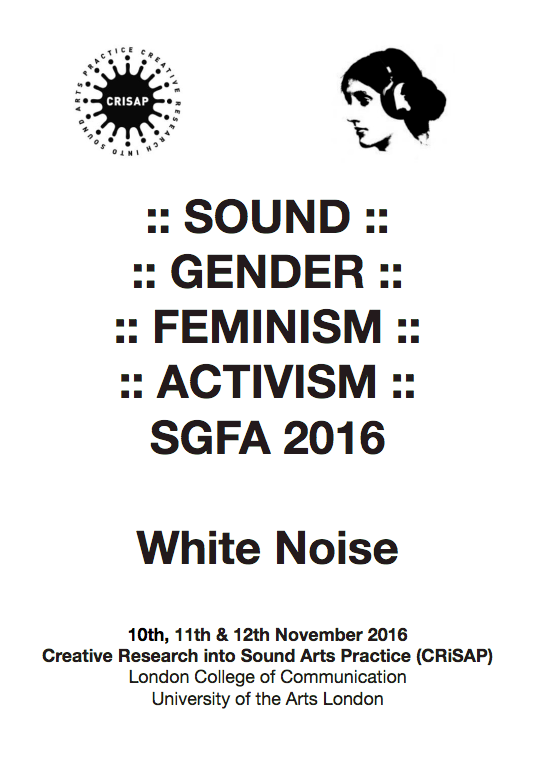
On November 11, 2016 INVASORIX participated with the video presentation MY GÜERX SKIN HURTS HORRIBLY. -Sí, cómo no. in SOUND GENDER FEMINISM ACTIVISM SGFA 2016 White Noise, University of the Arts London.
As cuir-feminists in a white supremacist capitalist patriarchy – as our imaginary friend bell hooks so accurately termed it – we attempt to intervene in its white noise in order to interrupt its hissing seemingly tranquilizing yet numbing sound. Moreover, in the mexicano context at least half of our group are read and addressed as güerxs: the word may refer to personas with blond hair and/or fair skin and/or to their supposedly “higher” social and cultural status, thus it might be also used to güeriar/flatter in order to get something.
While associating white noise with an opaque and subaudible power, which hierarchically organizes bodies, lands, resources and access, among others, through a reggaetón song we seek to address these complex intersections as well as the power dynamics, blind spots, and different privilegios such as racial, class and educational aspects within our group: How do they affect, transform, challenge, hinder and lessen relationships, dialogues, work and the ethical, political and creative risks we take? How could our reggaetón song be a fertile ground to provocar cuir-feminist empowerment and a significant descolonial gesture challenging its essentializing association of “latinx” y “caribeñx” as well as its intrinsic relation with dancing, physicality and sexualidad?
Essay “Wrestling With Burlesque, Burlesquing Lucha Libre,” in Performance and Professional Wrestling
My essay “Wrestling With Burlesque, Burlesquing Lucha Libre” is part of Performance and Professional Wrestling, edited by Broderick Chow, Eero Laine, Claire Warden and with contributions by Keiko Aiba, Stephen di Benedetto, Janina Bradbury, Broderick Chow, Morgan Daniels, Carrie Dunn, Jon Ezell, Stephen Greer, Jamie Lewis Hadley, Nina Hoechtl, Charles Hughes, Eero Laine, Heather Levi, Laura Katz Rizzo, Sharon Mazer, Nicholas Porter, Claire Warden, Nicholas Ware (London and New York: Routledge, 2017)
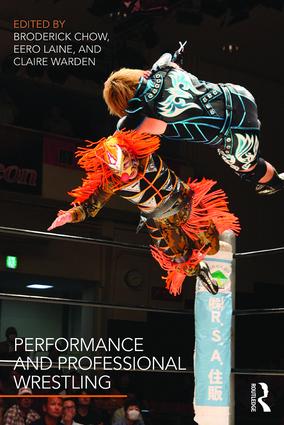
Performance and Professional Wrestling is the first edited volume to consider professional wrestling explicitly from the vantage point of theatre and performance studies. Moving beyond simply noting its performative qualities or reading it via other performance genres, this collection of essays offers a complete critical reassessment of the popular sport.
Topics such as the suspension of disbelief, simulation, silence and speech, physical culture, and the performance of pain within the squared circle are explored in relation to professional wrestling, with work by both scholars and practitioners grouped into seven short sections:
Audience
Circulation
Lucha
Gender
Queerness
Bodies
Race
A significant re-reading of wrestling as a performing art, Performance and Professional Wrestling makes essential reading for scholars and students intrigued by this uniquely theatrical sport.
SPUKEN IM ARCHIV! / HAUTINGS IN THE ARCHIVE!, July 5, 6, 8 and 12, 2016
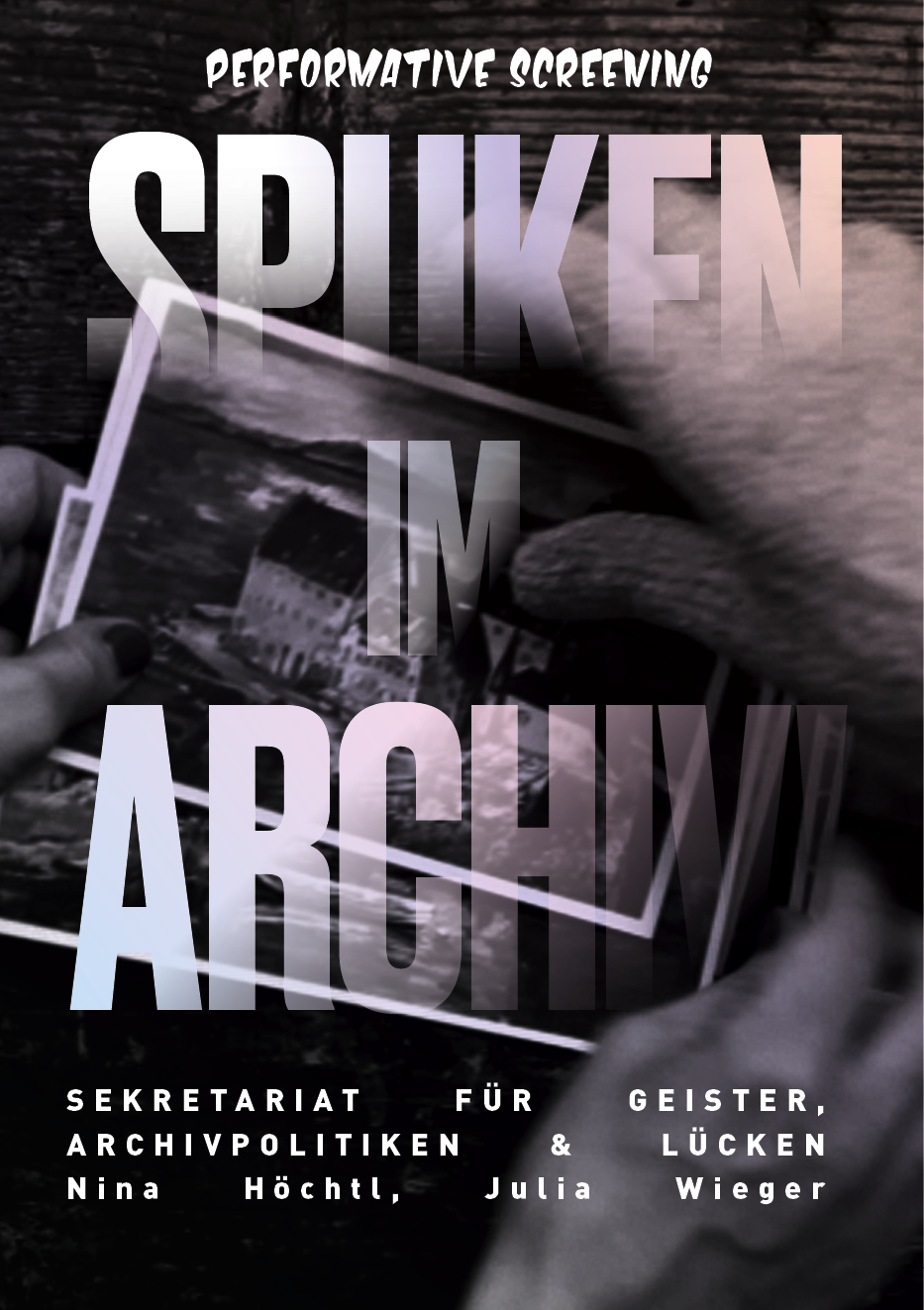
In July the Sekretariat für Geister, Archivpolitiken und Lücken (Secretariat for Ghosts, Archival Politics and Gaps – SKGAL) will present the project SPUKEN IM ARCHIV!/HAUTINGS IN THE ARCHIVE! through a series of performative screenings:
SPACE I: Künstlerhaus Büchsenhausen
Weiherburggasse 13/12
6020 Innsbruck
Tuesday, July 5, 2016, 7 pm
SPACE II: FÜNFZIGZWANZIG
Residenzplatz 10
5020 Salzburg
Wednesday, July 6, 2016, 6:30 pm
Ort III: [esc] medien kunst labor
Bürgergasse 5
8010 Graz
Friday, July 8, 2016, 9 pm
Ort IV: das weisse haus
Hegelgasse 14
1010 Wien
Tuesday, July 12, 2016, 7 pm
HAUNTINGS IN THE ARCHIVE! is a film and research project by SKGAL which deals critically with the hi/herstory/ies and archive of the Austrian Association of Women Artists (VBKÖ).
SKGAL is a working group of the VBKÖ, an institution that was founded in 1910 as one of the first organizations in Europe that represented the interests of women artists. While the feminist origins of the association provide an impressive and important point of reference – and this includes contemporary perspectives – the hi/herstory/ies of the association are ambivalent: In 1938 the VBKÖ committed to cooperation with the National Socialist regime. Furthermore, over the several decades following 1945, it did not break away from its everyday routines and personnel which stemmed from National Socialist period. A radical change in the direction of the subject matter and content finally took place in the late 1990s through a clear generational shift of the VBKÖ’s board. Hand-in-hand with the new direction, the VBKÖ established its archive in 2004 and began its involvement in the contemporary feminist art context of Vienna.
In this context, SKGAL asks how hi/herstory/ies can/could be written in a self-organized women’s artist association. Moreover, how can an association which now fosters contemporary feminist artistic agendas establish a vital connection between historical debates and contemporary queer, feminist art productions? And how can it do so with artistic means?
Through the performative screenings, HAUNTINGS IN THE ARCHIVE!, SKGAL invites you to follow the ghosts of the VBKÖ, and to join them in reconsidering the material in the archive of the association in order to challenge it through debates and interpretations. For this project SKGAL will appropriate historical images and textual material from the archive, it will indicate gaps, reclassify material, and bring about a variety of connections. In the project, ghosts haunt places, voices and images, and they show strategies as well as the power of hi/herstory/ies. Along with the ghosts, SKGAL aims to contradict the unequivocal consolidations of history and will thereby attempt to update the hi/herstory/ies in the archive in order to shift views on its material. This way it is possible for the archivist Sabine Harik, who compiled the archive of the VBKÖ, the philosophers Jacques Derrida and Michel Foucault, the feminist artists network INTAKT, the art historian Julie M. Johnson, the cultural scientist Kate Eichhorn and the artist VALIE EXPORT to come together in order to challenge the hi/herstory/ies of an old association for women artists!
Gefördert aus den Mitteln von / Funded by SHIFT.
Exhibition: BETWEEN WORD AND IMAGE A Gloria Anzaldúa Thought Gallery, March 17 – April 16, Casa de Cultura de la UAEM, Tlalpan, Mexico City
BETWEEN WORD AND IMAGE
A Gloria Anzaldúa Thought Gallery
Opening: March 17, 2016, 5:30pm
Exhibition: March, 18 – April 16, 2016
Casa de Cultura U.A.E.M. en Tlalpan
Triunfo de la Libertad #9, Mexico City
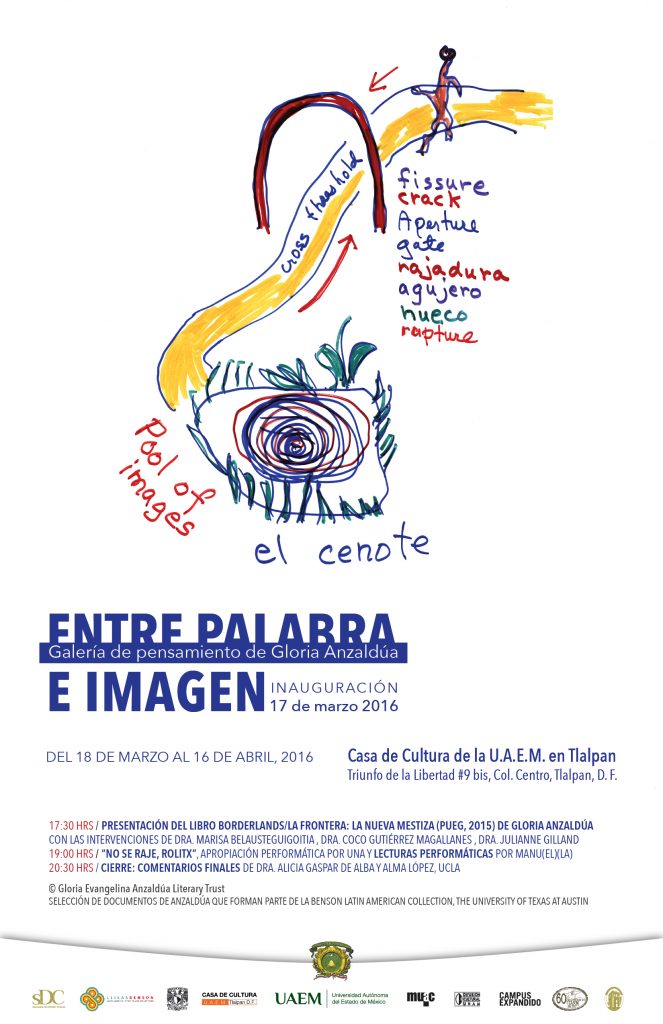
Opening program
5:30pm
Book lunch
Borderlands/La frontera: la nueva mestiza (PUEG, 2015)
by Gloria Anzaldúa
with interventions by
Marisa Belausteguigoitia (Facultad de Filosofía y Letras, UNAM)
Coco Gutierrez-Magallanes (independent researcher)
Julianne Gilland (LLILAS Benson Latin American Studies and Collections, Universidad de Texas/Austin)
7pm
“No se raje, rolitx”, performative appropriation by Una
Performative readings by MANU(EL)(LA)
8:30pm
Closing: comments by Alicia Gaspar de Alba and artist Alma López (UCLA)
A day before the opening, on March 16 at 5pm the conversation
Imagen, cuerpo y palabra: los documentos de Gloria Anzaldúa y La Archiva/DIWO de Mónica Mayer
with Julianne Gilliand (director of the Nettie Lee Benson Latin American Collection) Mónica Mayer (feminist artist) and Karen Cordero (feminist art historian and curator)
will take place at the MUAC.
An image is a bridge between evoked emotion and conscious knowledge; words are the cables that hold up the bridge. Images are more direct, more immediate than words, and closer to the unconscious. Picture language precedes thinking in words; the metaphorical mind precedes analytical consciousness.
Gloria Anzaldúa, Borderlands: the new mestiza = La frontera, 1987
When I studied painting and writing, I discovered that I could create concrete universes. Rather, I didn’t create them; I was the conductor for them, the channel.
Gloria Anzaldúa, “Creativity and Switching Modes of Consciousness,” 1986
BETWEEN WORD AND IMAGE. A Gloria Anzaldúa Thought Gallery, exhibited for the first time in the south of the Río Bravo, confronts us inevitably and creatively with the following questions: How do we read and take up the visual and textual work of Anzaldúa today, here in Mexico? What role do borders play? Borders, we inhabit, we survive and where we live. How does Anzaldúa help us give tongue/language and sense to the ways in which race relations, gender, sexuality, ethnicity and class are configured in Mexico and the Borderlands? What is she saying/showing to us? How current/relevant are her thought and intellectual propositions?
A self-described “Chicana, tejana, working-class, dyke-feminist poet, writer-theorist,” Gloria Anzaldúa also saw herself as a nepantlera, one who navigates a liminal space between worlds, identities, and ways of knowing. Just as fluid movement between English, Spanish and Nahuatl was central to Anzaldúa’s teaching and writing, so too was the interplay between words and images an essential element of her self-expression.
The words and images presented for the first time in Mexico come from transparency drawings, notes, and diagrams that Anzaldúa presented to her audiences at workshops and lecture “gigs” across the United States of America. Some are undated, but many were created during one of the most active periods of her teaching career, in the mid-1990s.
These vivid documents provide an intimate view into Anzaldúa’s creative process and demonstrate the centrality of imagination and visuality to the author’s theories of knowledge and consciousness. Anzaldúa explores borders and builds bridges that allow contact, friction, and mixture with the unexpected, the foreign, the queer, the “other,” which is, in many instances, the reverberation of the self and the collective memory.
SELECTION FROM THE ANZALDÚA PAPERS AT THE BENSON LATIN AMERICAN COLLECTION
THE UNIVERSITY OF TEXAS AT AUSTIN
CURATORS:
Julianne Gilland, Coco Gutiérrez-Magallanes, Nina Hoechtl, Rían Lozano
Curatorial assistents: Alana Varner y Frank Rodriguez (at the LLILAS Benson Latin American Studies and Collections – University of Texas/Austin), MANU(EL)(LA) (in the Casa de Cultura de la UAEMéx)
Translations: Coco Gutiérrez-Magallanes, Nina Hoechtl, Valerie Leibold, Rían Lozano, Mauricio Patrón.
Voices: MANU(EL)(LA)
Convened by Casa de Cultura de la UAEMéx, Campus Expandido/MUAC, LLILAS Benson Latin American Studies and Collections, Universidad de Texas/Austin, Tepetongo. Balneario Crítico y Centro Cultural Border.
